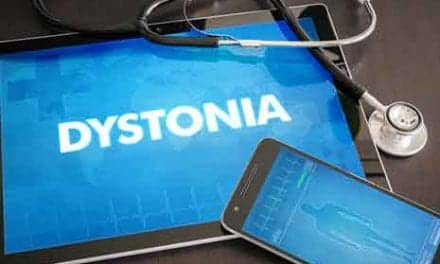Advances in technology can help therapists improve pain management outcomes with these sometimes overlooked tools.
Physical therapists (PTs) are highly educated, licensed health care professionals who can help patients reduce pain and improve or restore mobility—in many cases without expensive surgery and often reducing the need for long-term use of prescription medications and their side effects.”1
The primary goal of physical therapists is to promote and restore proper movement to the human body. Limitations could include pain, weakness, deficient balance or coordination, range of motion deficiencies, or other factors. Fixing these issues can involve several strategies and procedures. Patients are always looking for a quick fix, and we have the tools to provide that quick fix for them.
One of the terms used to describe the treatments utilized by PTs is “modalities,” specifically defined as ways of applying superficial or deep heat, cold, electrical current, super luminous diode light therapy, low level laser therapy (LLLT), or any other physical agent(s) to the body to induce a desired physiological effect. Those effects could be used to increase circulation, decrease pain, or improve an inflammatory condition. However, due to factors such as conflicting research or changes in reimbursement, therapists have begun to move away from modalities in favor of new techniques. That tide is being reversed, though, as advances in ultrasound, electrical stimulation, and LLLT/light technologies make it possible for therapists to achieve those pain relief goals with an increasing level of efficacy and efficiency.
SAFER DESIGNS FOR HEAT AND HEALING
When superficial heating is needed, most therapists choose moist heat packs. While very effective, moist heat technologies do have limitations. Fortunately, technology has advanced to the point that moist heat pack technology has eliminated problems associated with the traditional types of packs. Newer technology has introduced antimicrobial materials that eliminate cross-contamination and provide greater heating efficiency. Furthermore, newer types of moist heat packs can be kept at lower water temperatures and, thus, reduce the incidence of burns, to both therapists and patients, while still providing therapeutic moist heat to superficial tissues (1 cm depth). These new technologies promote cost savings by eliminating the need for terry covers and requiring only a clinic towel or pillowcase for use with the patient. They also benefit from the development of better seam technology, which can prevent the leakage associated with previous generations of heat pack designs.
When addressing deeper tissue dysfunction, clinical ultrasound should be used to create superficial (0-3 cm) and deep heating (3-5 cm) effects. Research indicates that by elevating tissue temperature 4?C, tissue extensibility (ability to stretch), muscle relaxation, and increased localized circulation all are increased. In the journal Pain, a 2001 systematic review of 38 studies was performed from which the review authors Baker et al2 concluded there seemed to be little evidence to support the use of ultrasound in the treatment of musculoskeletal disorders. Many factors (duty cycle, intensity, delivery medium, treatment time, speed of application, and contact at the treatment site) affect the application of clinical ultrasound. The all-too-common shortened treatment times and ineffective application techniques will result in a less than desired clinical outcome or a placebo effect that might be the typical experience of the 38 studies reviewed by Baker et al.2
Conversely, there are many published studies that confirm that clinical ultrasound is an effective form of treatment for pain, inflammation, and tissue extensibility; 1 MHz ultrasound set at a 100% duty cycle, at 1.0 w/cm², can heat tissue to 4?C at a depth of 5 cm when treating the site for 20 minutes. While effective, however, that is not practical. Like moist heat packs, technology also has been created to aid therapists in the ever-changing demands of ultrasound technology.
For example, some technologies now feature hands-free ultrasound devices that are engineered to reduce the occurrences of “faux pas” that can occur with older technology designs. One such hands-free ultrasound device maintains a consistent speed of 4 cm/sec and continual contact at the treatment site and utilizes a consistent medium that does not migrate or need to be reapplied. This device used to deliver a subthermal treatment with a 20% duty cycle, at both 1 and 3 MHz frequencies and a low intensity (0.5 w/cm2) for 5 minutes, through mechanisms of stable cavitation and acoustic streaming can reduce inflammation and pain. Likewise, it can reset the muscle spindle and Golgi tendon organ function in spastic or contractured tissue after stretching.
ELECTRODES: LOCATION MATTERS
When applied with the appropriate parameters, electrode placement, and intensity, electrotherapy is also a very effective form of pain management. The Gate Control Theory3 demonstrates that the stimulation of A beta and A delta (large sensory) fibers causes the inhibition of noxious level pain transmission presynaptically on the C fiber, blocking pain to the brain. Another theory of pain control is the Endogenous Opiate Theory.4 This theory demonstrates that long-term pain relief occurs when Met-enkephalin and dynorphin are released presynaptically at the dorsal horn via the use of electrical stimulation. Sensory neurons bind to the delta and kappa receptors, respectively, inhibiting stimulatory neurotransmitter release in the dorsal horn. Ultimately, this results in the limiting of pain transmission to the brain.
The market does offer cost-effective, feature-rich clinical stimulators that deliver favorable pain management outcomes for patients. To optimize results with these devices, place the electrodes on the arm at Li4, Li11, Tb5, and P6 (acupuncture points) for low back pain or leg pain, and select the Interferential (IFC) or the Balanced Asymmetrical Biphasic (TENS) at a frequency of 100 pps to an intensity that results in a slight motor twitch with a quick onset but short duration pain relief.5 If a clinical unit isn’t available, the same result can be achieved using a portable TENS unit with the same electrode placement above, but with a frequency set at 2 pps6,7 and elevating the amplitude to a slight motor twitch, for a longer lasting outcome of pain relief, decreasing the impact of pain on function for up to 6 hours.
E-STIM EVOLVES
Designed to help muscles regain strength and control post-injury and post-surgery, electrical stimulation is often underutilized in muscle reeducation. When used with voluntary contraction strengthening methods (weights, therapy tubes/bands), studies suggest that 30% more force is elicited with the use of electrical stimulation when compared to a maximum voluntary contraction alone.8 It also has been demonstrated that during electrical stimulation, type-II fast-twitch fibers were stimulated first.9,10 In 1965, Henneman et al11 demonstrated that slow, type-I motor units are recruited before fast, type-II fibers (asynchronously and according to size) during voluntary contraction. Electrical stimulation when imposed on muscles during training will likely be responsible for the gains in muscular strength observed during muscle reeducation with electrical stimulation. When searching for an aid to enhance muscle strength, why not utilize that electrical stimulation?
INJECTION ALTERNATIVE
Another very effective modality used to help manage pain is iontophoresis. This type of technology utilizes a low-level electrical current to deliver medication through the skin to an area of injury without an injection. Very effective in areas that are within 1 cm of the skin surface (elbow tendons, knee tendons, ankles, etc), it unfortunately requires a prescriptive medication and can be costly. Updated technology, however, now offers the market a device that does not require current or a prescription; this low-cost, pain-relieving, over-the-counter modality is now available through healthcare providers. Using the pain reliever lidocaine, the 4% adhesive-infused pain patch is a cost-effective alternative to prescription patches and counterirritants following electrical stimulation or ultrasound.
COMBINED THERAPIES ON A SINGLE PATIENT
Newer techniques using phototherapy through LLLT, super luminous diodes (SLDs), and light emitting diodes (LEDs) also have been shown to reduce pain and decrease inflammation similar to ultrasound and electrical stimulation. The mechanism of action begins when cytochromes or chromophores absorb light, resulting in photobiostimulation or photobioinhibition.
Using the right combination of modalities, the potential exists for new technologies to create effective outcomes. An example of this is a “combination unit” that offers multiple modalities in one device. This type of technology can simultaneously utilize all the technologies discussed to treat a single patient. Such devices may provide LLLT, SLD, LED, 2- or 4-channel electrical stimulation, ultrasound utilizing a therapy hammer (2 cm² and 5 cm² ultrasound applicator), or hands-free ultrasound. In practical application, LLLT can be utilized for deep application at the cisternae, while SLD/LED can be used for superficial application to increase localized circulation and lymphatic flow at the site of injury; subthermal ultrasound can be performed with the hands-free ultrasound applicator at 1 and 3 MHz simultaneously over the treatment site to increase cell membrane permeability and increase local blood flow in both shallow and deep tissue; and 2- or 4-channel electrical stimulation can be used for pain management and muscle reeducation. All are utilized in a 30-minute time frame to provide optimum results during a patient’s first treatment.
RELIEF: WHAT PATIENTS WANT
As with any treatment, we must consider the best clinical choice for our patients. All of these modality applications can be used for pain reduction, inflammation or edema management, and tissue repair. The most important aspect of rehabilitation and treatment is not the utilization of these modalities that allow quick management of symptoms of the dysfunction, but rather the bulk of the treatment processes should address the causes of the dysfunction related to how the body moves and functions. Why not return to our roots, re-familiarize ourselves with these effective forms of treatment, and utilize these powerful “new” technological advances to improve patient outcomes quicker than ever, in fewer visits? RM
Keith Khoo, PT, graduated from the University of Oklahoma and has been in practice since 1985. He has been president, vice president, and membership chair as well as district vice president and president within the Oklahoma Physical Therapy Association (OPTA). In 1996, Khoo was recognized with the OPTA’s highest achievement award, the Chapter Founder’s Award. He has evaluated and treated geriatrics to pediatrics, and practiced in environments from long-term care to outpatient sports medicine to industrial medicine. He presently evaluates and treats patients at Scholl Center, a facility that evaluates and treats movement disorders such as Parkinson’s disease and multiple sclerosis, as well as neuropathic patients, balance and vestibular disorders, pain management, and headache patients. Khoo has taught continuing education courses about modality applications for neuromusculoskeletal dysfunctions in the United States and abroad. For more information, contact [email protected]
References:
1. www.apta.org/aboutpts/. Accessed August 12, 2014.
2. Baker KG, Roberston VJ. A review of therapeutic ultrasound: effectiveness studies. Phys Ther. 2001;(7):1339-50.
3. Melzack R, Wall PD. Pain mechanisms: a new theory. Science. 1965;150(3699):971-979.
4. Basbaum Al, Fields HL. Endogenous pain control mechanisms: review and hypothesis. Ann Neurol. 1978;4(5):451-62.
5. Han J-S. Acupuncture: neuropeptide release produced by electrical stimulation of different frequencies. Trends in Neurosciences. 2003; 26:17–22.
6. Han JS, Chen XH, Sun SL, et al. Effect of low- and high-frequency TENS on Met-enkephalin-Arg-Phe and dynorphin A immunoreactivity in human lumbar CSF. Pain. 1991;47:295–298.
7. Huang C, Wang Y, Shi YS, Han JS. Study for the opioid mechanisms underlying the analgesia effect induced by high- versus low-frequency electro-acupuncture in mice. Chinese Journal of Pain Medicine. 2000;6:96–103.
8. Selkowitz DM. Improvement in isometric strength of the quadriceps femoris muscle after training with electrical stimulation. Phys Ther. 1985;65(2):186-196.
9. Kramer J, Mendryk S. Electrical stimulation as a strength improvement technique: a review. J Orthop Sports Phys Ther. 1982,4:91-98.
10. Delitto A, Snyder-Mackler L. Two theories of muscle strength augmentation using percutaneous electrical stimulation. Phys Ther. 1990;70:158-164.
11. Henneman E, Somjen G, Carpenter DO. Functional significance of cell size in spinal motoneurons. J Neurophysiol. 1965;28:560-580.





